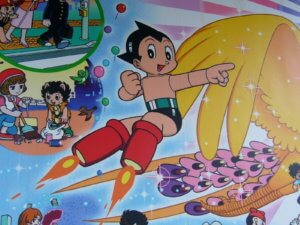Japanese people are punctual but waiting can be positive in Japan
For Japanese, waiting is active
Japanese display great patience, but it does not mean they are unaware of time passing. Meetings are expected to begin on time. Agendas always assign a time frame for each item. By contrast, Americans tend to be more relaxed about meeting times. There always seems to be time for people to finish up phone calls and last-minute details before getting to the meeting. Japanese are almost always assembled on time for the beginning of meetings, even if they have to leave immediately afterward.
However, for Japanese, waiting is active. For Americans, waiting is passive and feels like a loss of control. Knowing about the differences in time perception and attitudes Japanese and Americans hold towards waiting can save us frustration when working together.
Waiting at the station
After graduate school, I taught Japanese for several years. In their first year of study, students learn that “at a (location)” is expressed differently according to whether they are places of existence (using the particle “ni” for example, “He is at the station 駅にいます”) or places where action takes place (using the particle “de,” “He is eating at the station 駅で食べています”). But what about “He is waiting at the station”? Each year almost 100% of my American students chose the existence construction and not the action construction. “Why is “waiting” an action?” they always asked. Students who could accept quickly this aspect of Japanese grammar were often the ones who continued on to proficiency later. Naturally “he is waiting at the station” is a favorite trick question on exams, because so many American students have difficulty with it.
Later, when I taught Japanese to an American executive (from an excellent textbook aptly called Japanese for Busy People), and we got to the “waiting at the station” lesson, he said “Aha, waiting is an action! Now I get it! Waiting is a strategy.” In fact, medieval Japanese military manuals contain strategies for waiting and forcing the other side to make the first move. This is in contrast to Americans tending to prefer the strategy of “first mover advantage” and be mindful of “opportunity cost.”
Good things come to those who wait

In Japanese folklore there are many stories about people who wait almost beyond human endurance and are rewarded for their patience. For example, the man who waits for one hundred days in the snow in order to have a brief glimpse of the face of beautiful woman, or the young man who wants to be taught by a great teacher and who stands outside the teacher’s house every day for number of years before becoming a student. The young man is accepted precisely because he has the patience to wait, not because he has any particular talent.
On the other hand, Americans feel that being made to wait is to be disrespected, or that somehow we should be able to control how time is used. This causes us a lot of stress and anxiety. Japanese seem to be more accepting of how things are, and recognize the limit to which we can control our time.


